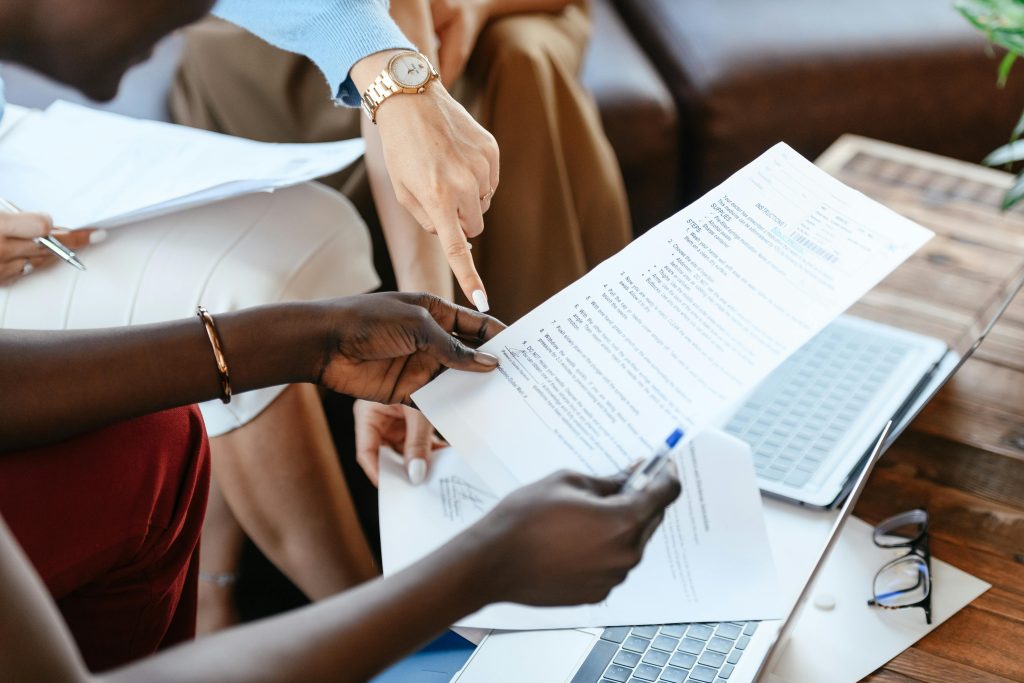Introduction
Every successful marketing strategy begins with a clear understanding of how potential customers move from initial awareness to brand loyalty. The marketing funnel—also known as the purchase or sales funnel—provides a structured framework for visualizing this journey. In today’s digital-first landscape, mapping the funnel digitally ensures you reach the right people at the right time with the right message. This blog post will explain each stage of the marketing funnel, outline key digital channels and tactics for each phase, and provide a step-by-step guide to creating a digital funnel map. By the end, you’ll have the blueprint you need to optimize lead generation, nurture prospects, and drive conversions online.
1. Understanding the Stages of the Marketing Funnel
1.1 Awareness Stage
Objective: Introduce your brand or product to a broad audience.
- Definition: At the top of the funnel, prospects discover that your brand exists. They may not yet realize they have a specific need; your goal is simply to get on their radar.
- Key Activities:
- Content Marketing: Blog posts, infographics, educational videos.
- Social Media Advertising: Facebook, Instagram, LinkedIn ads targeting demographic or interest-based segments.
- Search Engine Marketing (SEM): Broad keyword bidding (e.g., “how to solve [pain point]”).
- Public Relations & Influencer Partnerships: Press mentions, influencer shout-outs to amplify reach.
- Metrics to Track: Impressions, website traffic (new visitors), social media reach, brand mentions, share of voice.

1.2 Interest Stage
Objective: Educate prospects and spark genuine interest in your solution.
- Definition: Prospects know they have a need and begin researching solutions. They engage with educational materials that position your brand as an authority.
- Key Activities:
- In-Depth Blog Articles or Whitepapers: Detailed guides, industry reports, or ebooks that address specific pain points.
- Webinars and Virtual Events: Live or on-demand sessions where experts discuss common challenges and best practices.
- Email Newsletters: Curated content sent to subscribers who have opted in, reinforcing your expertise.
- Retargeting Ads: Display ads served to visitors who consumed awareness content, reminding them to learn more.
- Metrics to Track: Time on Page, pages per session, webinar registrations, content downloads, email open and click-through rates (CTR).
1.3 Consideration Stage
Objective: Differentiate your solution and build trust.
- Definition: Prospects are comparing multiple options—your product or service versus competitors. They evaluate features, pricing, and reviews.
- Key Activities:
- Case Studies and Customer Testimonials: Real-world success stories that illustrate ROI and outcomes.
- Product Demos or Free Trials: Interactive experiences that let prospects “test drive” your offering.
- Comparison Guides: Side-by-side feature comparisons, price breakdowns, or “vs.” blog posts.
- Email Drip Campaigns: Sequences that share deeper insights, product updates, and personalized content based on user behavior.
- Metrics to Track: Demo requests, trial sign-ups, email sequence engagement, return visits, content downloads (case studies).
1.4 Conversion Stage
Objective: Encourage prospects to make a purchase or take a high-value action.
- Definition: Prospects are ready to buy. Your goal is to remove friction, reinforce trust, and provide clear calls-to-action (CTAs).
- Key Activities:
- Optimized Landing Pages: Highly specific pages with a singular focus—subscribe, buy, request a quote—featuring strong social proof and minimal distractions.
- Limited-Time Offers or Discounts: Incentives like a 10% off coupon, free shipping, or bonus features to spur decision-making.
- Live Chat or Chatbots: Real-time assistance to answer last-minute questions and overcome objections.
- Retargeting Ads with Conversion-Focused Messaging: Ads that feature testimonials, product benefits, and clear CTAs (e.g., “Shop Now,” “Claim Your Offer”).
- Metrics to Track: Conversion rate (form completions, sales), average order value (AOV), cost per acquisition (CPA), abandoned cart rate (for ecommerce).

1.5 Loyalty & Advocacy Stage
Objective: Retain customers, encourage repeat business, and foster word-of-mouth referrals.
- Definition: Loyal customers purchase again, advocate for your brand, or become referrals. Your focus shifts from acquisition to retention.
- Key Activities:
- Post-Purchase Email Sequences: Onboarding series, product usage tips, soliciting feedback or reviews.
- Loyalty Programs and Exclusive Offers: Points-based rewards, VIP discounts, early access to new features.
- User-Generated Content Campaigns: Encourage reviews, social media posts, or case study interviews.
- Customer Advocacy Initiatives: Referral programs offering incentives when customers refer new leads.
- Metrics to Track: Customer lifetime value (CLV), repeat purchase rate, customer satisfaction (CSAT), Net Promoter Score (NPS), referral traffic.
2. Why Mapping the Marketing Funnel Digitally Matters
2.1 Align Marketing and Sales Teams
- Shared Visibility: A digital funnel map creates a unified view of where leads are in their journey. Sales can see which content a prospect consumed, enabling personalized outreach.
- Efficient Handoff: Clearly defined criteria (e.g., lead score thresholds, specific content interactions) determine when marketing-qualified leads (MQLs) become sales-qualified leads (SQLs).
2.2 Optimize Budget Allocation
- Data-Driven Decisions: By tracking performance metrics at each funnel stage, you can allocate spend to channels and tactics that generate the highest ROI—for instance, increasing retargeting budgets if consideration-stage ads drive more demos.
- Identify Bottlenecks: A digital funnel map pinpoints where prospects drop off—maybe high awareness but low interest—informing adjustments to messaging or creative.
2.3 Personalize Customer Experiences
- Behavioral Targeting: Using digital analytics (e.g., Google Analytics, HubSpot, or CRM data), tailor messages based on user actions—visited pricing page but didn’t request a demo? Serve a case study video via email.
- Automation and Segmentation: Marketing automation platforms let you segment contacts by funnel stage and trigger specific communications—automated nurture sequences for those in consideration, transactional emails for new customers.
3. Steps to Map Your Marketing Funnel Digitally
3.1 Define Buyer Personas and Customer Journey Milestones
- Create Detailed Buyer Personas
- Include demographics (age, location, job title), psychographics (pain points, goals), and preferred digital channels.
- Example: “Emily, a 35-year-old marketing manager in a mid-sized B2B tech company who researches marketing automation software on LinkedIn and reads industry blogs.”
- Outline Key Customer Journey Milestones
- Identify the actions that indicate movement from one stage to the next—e.g.,
- Awareness → Interest: Downloads an ebook or subscribes to the blog.
- Interest → Consideration: Attends a webinar or watches a product video.
- Consideration → Conversion: Requests a live demo or starts a free trial.
- Conversion → Loyalty: Makes a second purchase or refers a colleague.
- Identify the actions that indicate movement from one stage to the next—e.g.,

3.2 Audit Existing Digital Touchpoints
- Inventory Content Assets
- List all blog posts, whitepapers, videos, social media posts, landing pages, ads, and email campaigns.
- Map Assets to Funnel Stages
- Tag each asset as Awareness, Interest, Consideration, Conversion, or Loyalty content.
- Identify gaps—perhaps you have many top-of-funnel blog posts but few conversion-focused case studies.
3.3 Set Up Tracking and Analytics
- Google Analytics Goals and Funnels
- Define Goals for critical actions (e.g., ebook download, webinar sign-up, demo request).
- Create Conversion Funnels mapping the path a user typically takes (e.g., Homepage → Blog → Content Download → Thank-You Page).
- UTM Parameters and Campaign Tracking
- Append UTM codes to URLs in your ads, email links, and social media posts to track which channels and campaigns drive traffic and conversions.
- Example: A LinkedIn ad linking to a webinar registration page should include
utm_source=linkedin&utm_medium=paid&utm_campaign=webinar_may2025.
- CRM Integration
- Sync your website, marketing automation, and CRM platforms (e.g., Salesforce, HubSpot). Capture lead source, content interactions, and lead status automatically.
3.4 Design Your Digital Funnel Map
- Choose a Visual Tool
- Options include Lucidchart, Miro, Google Data Studio, or even a slide deck in PowerPoint/Google Slides. Ensure the tool can embed links to analytics dashboards.
- Plot Each Funnel Stage Horizontally or Vertically
- Label columns (e.g., Awareness, Interest, Consideration, Conversion, Loyalty).
- Under each stage, list the specific digital channels and assets (e.g., for Interest, include “Whitepaper: Marketing Trends 2025,” “Email Nurture Series #1”).
- Annotate Key Metrics and KPIs
- For each asset or channel, note primary metrics—for instance:
- Awareness: 100,000 impressions, 10,000 new website visitors.
- Interest: 2,500 ebook downloads, 500 webinar registrations.
- Consideration: 200 demo requests, 150 trial sign-ups.
- Conversion: 75 paid subscriptions, 5% landing-page conversion rate.
- Loyalty: 30% repeat purchase rate, NPS score of 8.5.
- For each asset or channel, note primary metrics—for instance:
- Define Transition Criteria Between Stages
- Specify what action or behavior moves a lead from one stage to the next (e.g., clicking an email link, filling out a contact form, requesting a quote).
3.5 Implement Automation Workflows
- Marketing Automation Setup
- In platforms like HubSpot, Marketo, or ActiveCampaign, create workflows triggered by actions or content interactions:
- Trigger: “Downloads ebook” → Action: Send a follow-up email with a relevant case study (Interest → Consideration).
- Trigger: “Requests demo” → Action: Notify sales team and send “Thank You” email with onboarding resources (Consideration → Conversion).
- In platforms like HubSpot, Marketo, or ActiveCampaign, create workflows triggered by actions or content interactions:
- Lead Scoring
- Assign point values to specific behaviors (e.g., 10 points for a webinar attendance, 20 points for a demo request).
- Establish a threshold (e.g., 50 points) at which a lead becomes an MQL and is passed to sales.
- Dynamic Content Personalization
- Use website personalization tools to change banner messages or CTAs depending on a visitor’s stage:
- New visitor sees “Download Our Free Guide to [Topic].”
- Returning visitor who downloaded content sees “Book a Live Demo” CTA.
- Use website personalization tools to change banner messages or CTAs depending on a visitor’s stage:

3.6 Monitor, Analyze, and Iterate
- Regular Reporting Cadence
- Schedule weekly or monthly reports that show funnel performance—conversion rates between stages, cost per lead (CPL), and ROI by channel.
- Use dashboards in Google Data Studio or your CRM for real-time visibility.
- Identify Drop-Off Points
- If you see high awareness but low interest (e.g., many blog visitors, few ebook downloads), evaluate your call-to-action placement, content relevance, or landing page design.
- A/B Test and Optimize
- Continuously run experiments on headlines, CTAs, email subject lines, ad creatives, and landing pages. Even a 5–10% improvement in click-through or conversion rate can significantly impact overall funnel performance.
- Update Content Gaps
- If leads stall in the consideration stage, create more case studies, comparison guides, or testimonials. If conversions decline, refine pricing pages, reduce form fields, or introduce a limited-time incentive.
4. Best Practices for Digital Funnel Mapping
4.1 Keep Buyer Personas Front and Center
- Always tailor content, messaging tone, and channel selection to the specific needs, pain points, and motivations of each persona. A “one-size-fits-all” approach dilutes relevance and reduces engagement.
4.2 Maintain Consistent Branding and Messaging
- From social ads and landing pages to email sequences and retargeting banners, ensure consistent visual identity, tone of voice, and core value proposition to reinforce brand recall.
4.3 Focus on Value-Driven Content
- At every stage, content should answer the question: “What value does this provide to the user right now?” Early-stage content educates, mid-funnel content clarifies benefits, and bottom-funnel content removes purchasing objections.
4.4 Leverage Data to Refine Personas and Stages
- Analyze user behavior—heatmaps, session recordings, form analytics—to uncover friction points. Update personas and funnel definitions based on emerging patterns (e.g., new search terms, shifting user preferences).
4.5 Foster Alignment Between Marketing, Sales, and Customer Success
- Hold regular cross-departmental meetings to review funnel metrics, share insights (customer objections, frequent support tickets), and refine handoff criteria. A well-mapped funnel requires tight collaboration.

Conclusion
The marketing funnel remains a powerful framework for guiding prospects from initial awareness to long-term loyalty. By mapping this funnel digitally, you gain real-time visibility into each stage, optimize budget allocation, and deliver personalized experiences that resonate with your audience. Start by defining buyer personas, auditing existing digital assets, and setting up robust tracking mechanisms. Then, design your digital funnel map, implement automation workflows, and continually refine based on data-driven insights. Ultimately, a well-mapped digital funnel empowers you to attract more qualified leads, nurture them effectively, and drive sustainable revenue growth.
